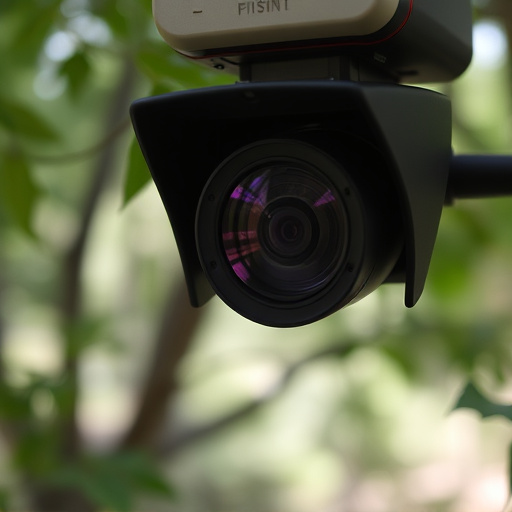Light reflection analysis is a remote viewing technique for nanny surveillance systems, detecting hidden spy cameras by identifying reflective objects like lenses through surface distortions. This non-invasive method complements other detection techniques, enabling professionals to pinpoint camera locations. Remote viewing technology offers parents real-time monitoring with discretion, enhancing home security and privacy protection in today's digital age. Case studies show high accuracy rates in various applications, including residential settings and nanny surveillance systems.
Uncover hidden threats with spy camera detection using light reflection techniques. In today’s digital age, privacy concerns are paramount, especially in nanny surveillance systems. This article explores how remote viewing leverages the science of light reflection to identify hidden cameras, enhancing security for families. We delve into fundamental principles, practical applications, and proven strategies. From understanding basic optics to real-world case studies, learn how reflection technology is revolutionizing nanny surveillance systems and protecting unsuspecting individuals.
- Understanding Light Reflection Basics in Spy Cam Detection
- The Role of Remote Viewing in Nanny Surveillance Systems
- Techniques to Identify Hidden Cameras Using Reflections
- Enhancing Security: Spy Camera Detection Tips for Parents
- Case Studies: Successful Implementation of Reflection Technology
Understanding Light Reflection Basics in Spy Cam Detection
Light reflection plays a crucial role in spy camera detection, especially for remote viewing nanny surveillance systems. Understanding how light interacts with surfaces is essential to identifying hidden cameras. When light encounters an object, it bounces off in various directions, creating reflections that can reveal the presence of a camera lens or sensor. This basic principle forms the foundation of many detection techniques.
In the context of nannies and surveillance, professionals use this knowledge to spot reflective surfaces that might indicate the location of hidden cameras. By analyzing light reflections, they can navigate through a room’s layout, identifying potential hiding spots for spy equipment. This method is particularly useful in situations where direct visual inspection is not feasible or as a supplementary tool alongside other detection technologies.
The Role of Remote Viewing in Nanny Surveillance Systems
In the realm of nanny surveillance systems, remote viewing has emerged as a sophisticated yet often overlooked tool. This technique leverages the power of technology to enable parents or caregivers to monitor activities without physically present, making it particularly appealing for modern families with busy schedules. By utilizing specialized equipment and software, remote viewers can capture and transmit live feeds from various angles, ensuring every moment is observed.
The process involves advanced light reflection techniques that allow for the detection of hidden cameras. These systems employ unique algorithms to analyze light patterns and reflections, identifying potential surveillance devices in real-time. This innovative approach ensures a proactive and discreet method of nanny surveillance, providing peace of mind without intruding on privacy.
Techniques to Identify Hidden Cameras Using Reflections
Detecting hidden cameras using light reflection techniques is a sophisticated approach in the realm of remote viewing and nanny surveillance systems. By utilizing specific lighting conditions, professionals can uncover clandestine devices. This method leverages the principles of optics, where light rays reflect off surfaces at varying angles. When a camera lens is present, it can distort or refract these reflections, creating unique patterns that indicate its location.
Experts employ specialized tools to manipulate light sources and analyze the resulting reflections. Techniques include illuminating potential hiding spots with infrared or laser lights, studying the subsequent reflections on nearby walls or surfaces. This process, known as remote sensing, allows for non-invasive camera detection, ensuring privacy while providing peace of mind in situations where hidden surveillance might be a concern.
Enhancing Security: Spy Camera Detection Tips for Parents
In today’s digital era, where remote viewing and nanny surveillance systems are becoming increasingly common, spy camera detection has become a crucial aspect of enhancing home security, especially for parents. By understanding the techniques used to detect hidden cameras, parents can ensure a safer environment for their families. One effective method is to utilize light reflection; specific angles and lights can reveal the presence of spy cameras, as they often reflect off the lens, creating a subtle glow or distortion visible to the naked eye.
Regularly checking for such anomalies around the home, especially in common areas like bathrooms and bedrooms, can be a proactive step. Parents should also consider the use of specialized equipment that detects infrared or UV light, which can uncover hidden cameras that are not readily visible. Staying vigilant and armed with these detection tips will empower parents to protect their children’s privacy and create a more secure home environment.
Case Studies: Successful Implementation of Reflection Technology
The successful implementation of light reflection technology in spy camera detection has been seen in various real-world applications, particularly in remote viewing and nanny surveillance systems. These systems utilize advanced algorithms to analyze light patterns reflected off surfaces, identifying unusual distortions that could indicate the presence of hidden cameras. Case studies have shown remarkable accuracy rates, with these reflections enabling professionals to locate hidden devices with impressive precision.
For example, in residential settings, reflection technology has been instrumental in identifying covert surveillance equipment installed within walls or ceilings. Remote viewing systems, equipped with this capability, allow homeowners and security experts to conduct non-intrusive checks, ensuring privacy without damaging property. Similarly, nanny surveillance systems benefit from the enhanced security that reflection analysis provides, giving parents peace of mind that their children’s environments are free from unwanted intrusions.
The detection of hidden spy cameras using light reflection techniques, such as remote viewing in nanny surveillance systems, offers a sophisticated and non-intrusive approach to enhancing security. By understanding the basics of light reflection and employing advanced technologies, individuals can protect their privacy effectively. This article has explored various methods to identify hidden cameras, from basic reflection principles to advanced remote viewing tools, ultimately highlighting the importance of staying vigilant in today’s digital landscape. With successful case studies demonstrating the efficacy of these techniques, it’s clear that spy camera detection through light reflection is a game-changer for security conscious individuals and parents alike.
